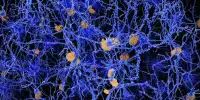An allergy is usually called a very common dose of harmful substances. Allergies, also known as allergic diseases, are a condition of infection for the commonly harmful substances in the environment by the hypersensitivity of the immune system. The substances that trigger allergy are called allergen. Allergies may include aeroallergens such as dust, mold and tree weeds and grass pollen, as well as food allergens such as milk, eggs, soy, wheat, nuts or fish proteins. These diseases include hay fever, food allergies, atopic dermatitis, allergic asthma, and anaphylaxis. Symptoms may include red eyes, itchy rash, and sneezing, runny nose, shortness of breath or swelling. Food intolerance and food poisoning are separate conditions. Allergy is one of the leading causes of asthma and associated with persistence.
Atop is a hereditary propensity for allergic diseases. When atopic people are exposed to allergens, they can build a resistance that leads to allergic inflammation. Although allergies can develop at any age, the risk of becoming allergic is genetic. It is related to the family history of allergies. Common allergens include pollen and certain foods. Problems can also be caused by metals and other substances. The allergens produce immunoglobulin E (IgE), which we all have in small amounts. The underlying mechanism involves immunoglobulin E antibodies (IgE), bound to an allergen in the body’s immune system, and later to a receptor for mast cells or basophils where it triggers the release of inflammatory chemicals such as histamine. It covers certain potentially explosive cells that contain chemicals including histamine. These chemicals instead cause symptoms of inflammation and general allergies. Further examination of the skin or blood may be effective in some cases. Positive tests mean, the substance in question may not have significant allergies. Thus when stimulated by an allergen, the immune system is disrupted and causes an allergic reaction.
Early exposure to potential allergens can be protective. Allergy treatments include avoiding known allergens and the use of drugs such as steroids and antihistamines. The immune system needs time to recognize and remember allergens. As it becomes sensitive to the substance, the immune system begins to produce antibodies to attack it. This process is called sensitivity. Serious reaction Injectable adrenaline (epinephrine) is recommended. Allergy Immunotherapy, which gradually gives people bigger and larger amounts of allergens, is useful for certain types of allergies such as hay fever and pork bite reactions.
If both parents are not allergic, the chance of allergy is about 15%. If a parent is allergic, the risk increases at 30%, and if both are allergic, the risk is more than 60%.In the developed world, about 20% of people suffer from allergic rhinitis, about 6% of people have food allergies, and about 20% have atopic dermatitis at any one time. The most common allergies include hay fever (allergic rhinitis), asthma, allergic eyes (allergic conjunctivitis), allergic eczema, diarrhea (Patricia), and allergic shock (also called anaphylaxis and anaphylactic shock). The word allergy was first used in 1906 by Clemens von Pirquet.















